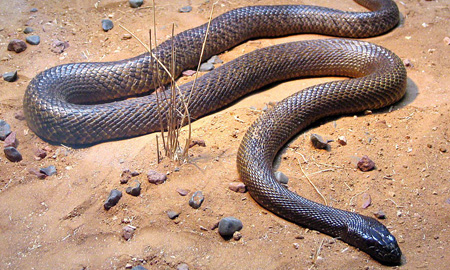Introduction
Tiger snakes are amongst the most popular and feared reptiles in Australia, widely identified for their striking look and potent venom. This article intends to explore the complexities of the tiger serpent's environment, distribution, actions, and what one can expect when running into these remarkable creatures. By understanding where to find them and just how to browse possible risks, you can value their function in the community while guaranteeing your security.
Tiger Snake Environment: Where to Find Them and What to Expect
Tiger serpents are primarily discovered in southeastern Australia, consisting of Tasmania, where they thrive in a range of environments. Their versatility allows them to inhabit varied terrains such as seaside regions, wetlands, grasslands, and also city locations.
Geographical Distribution of Tiger Snakes
The geographical reach of tiger serpents extends throughout a number of Australian states. They are specifically common in:
- Tasmania: The Tasmanian tiger serpent is one of one of the most acknowledged subspecies. Victoria: Discovered near water bodies like rivers and lakes. New South Wales: Favoring bushland areas near water sources. Western Australia: More generally seen around swamps and estuaries.
Understanding the geographical distribution is essential for both conservation initiatives and public recognition regarding experiences with these snakes.


Preferred Environments of Tiger Snakes
Tiger serpents thrive in numerous environments. Below are some typical atmospheres where they might be located:
Wetlands: They favor marshy or swampy areas where they can access target easily. Coastal Regions: Near coastlines or rocky shorelines offer abundant food resources like fish and amphibians. Forested Areas: Dense thicket uses sanctuary from killers while giving searching grounds.Behavioral Patterns Associated with Habitat
Understanding tiger serpent behavior within their habitats is essential for communication administration:
- Nocturnal Activity: Tiger snakes have a tendency to be more energetic during twilight hours (sundown and dawn), making them more challenging to spot during daytime. Territorial Nature: They show territorial behavior; hence, it's vital to value their area if encountered.
This understanding can aid mitigate undesirable communications in between human beings and tiger snakes.

Are Tiger Snakes Venomous?
Yes, tiger serpents are indeed venomous. Their poison consists of neurotoxins that can cause paralysis or even fatality if untreated.
What Makes Their Venom Dangerous?
The strength of a tiger snake's venom differs relying on numerous variables:
- Geographic location Individual health Quantity injected throughout a bite
Symptoms of a Tiger Snake Bite
Recognizing symptoms early is important:
- Pain at the bite site Swelling Difficulty breathing
Immediate medical attention is important if bitten.
First Aid for Serpent Bites
Knowing emergency treatment treatments can be lifesaving in situation of a snake bite.
First Help Tips for Snake Bites
Stay calm; keep the damaged area still. Call emergency situation solutions immediately. Apply a pressure bandage over the bite site. Keep the private lying down up until help arrives.Following these steps can considerably enhance outcomes complying with a serpent encounter.
Where Else Can You Experience Tiger Snakes?
While they're often discovered in their all-natural habitats, urbanization has actually resulted in increased encounters with humans.
Urban Encounters
Tiger serpents may venture into gardens or parks looking for food or water sources.
Precautions When Treking or Exploring
When checking out areas known for tiger snake habitats:
- Wear thick boots Stay on paths Be vigilant
Taking these precautions will certainly assist lessen risks while you enjoy nature.
Baby Tiger Snakes: An Unique Viewpoint on Growth
Just like grownups, infant tiger snakes are birthed poisonous yet smaller sized in size.
Characteristics of Infant Tiger Snakes
- Size: Normally around 20-- 30 cm when born. Appearance: Sport similar pigmentation as grownups yet might have lighter bands initially.
Understanding their growth assists in valuing their environmental role from early stage onward.
FAQs concerning Tiger Snakes
1. Are all tiger snakes venomous?
Yes, all varieties of tiger serpents have poison with the ability of triggering significant harm.
2. How can I recognize a tiger snake?
Look for distinctive banding patterns ranging from yellowish-brown to blackish shades along their bodies; adults typically expand between 1-- 2 meters long.
3. What ought to I do if attacked by a tiger snake?
Seek instant medical interest; use first aid steps as gone over earlier while keeping calm.
4. Do baby tiger serpents posture any type of danger?
Absolutely! In spite of their small dimension, child tiger snakes are still poisonous and can supply attacks that require serious clinical attention.
5. Are there any details environments I should avoid?
Avoid going through dense underbrush or near stationary water where conditions favor snake presence throughout warmer months.
6. Just how do conservation initiatives affect tiger serpent populations?
Conservation initiatives concentrate on environment conservation which directly affects populace security by making sure enough food resources and secure breeding locations.
Conclusion
In summary, understanding "Tiger Snake Habitat: Where to Find golden crown snake Them and What to Expect" not only improves our understanding about these amazing reptiles however additionally improves our capability to coexist safely with them in shared atmospheres. From recognizing their favored habitats to knowing exactly how to respond effectively if bitten, extensive knowledge empowers us all-- whether we're wildlife enthusiasts or casual walkers-- to appreciate this remarkable facet of Australia's natural heritage while prioritizing our safety.
This short article functions as a substantial guide on every little thing pertaining to tiger snake environments! Whether you're a devoted explorer or someone looking just for details concerning these creatures, understanding exactly how they engage First aid for snake bites within their ecosystems-- and how we suit that picture-- is crucial!